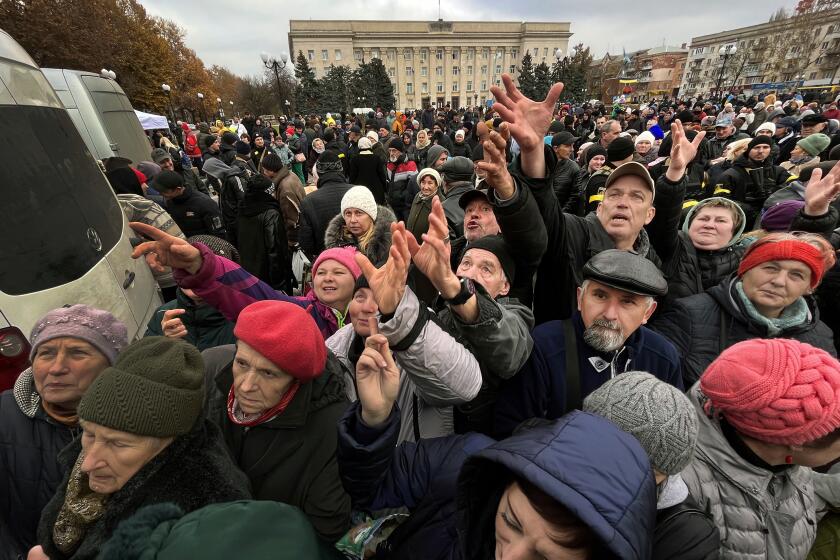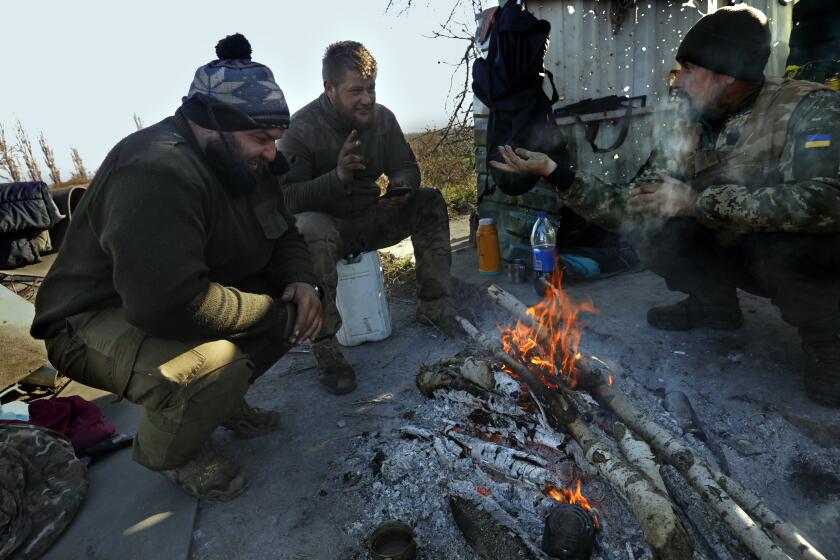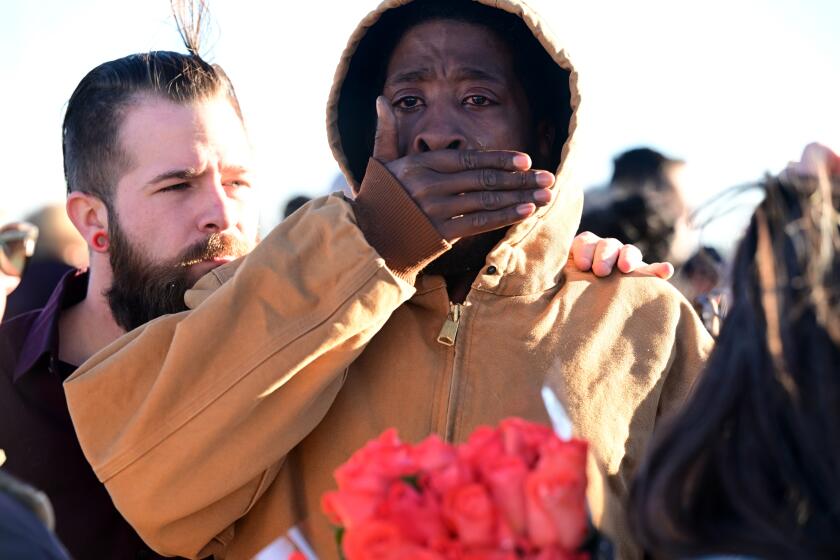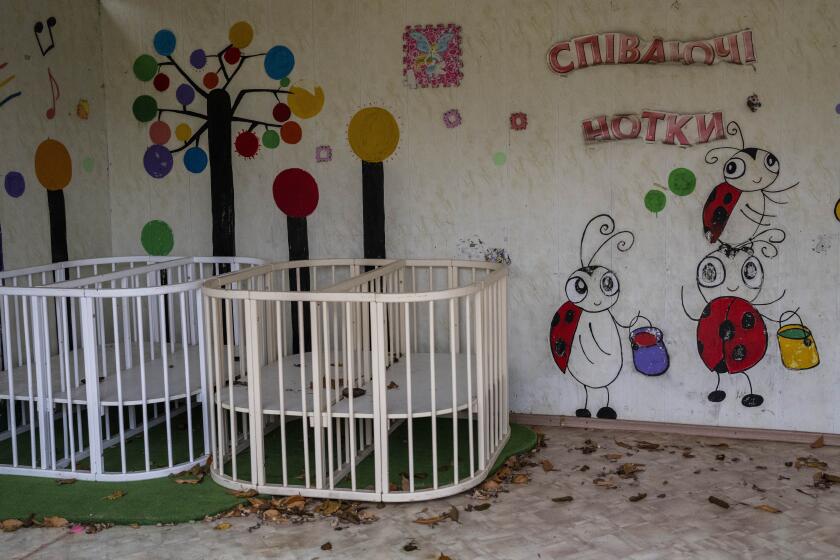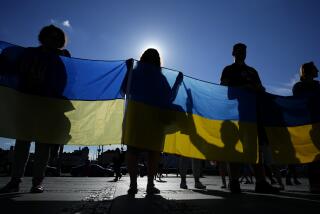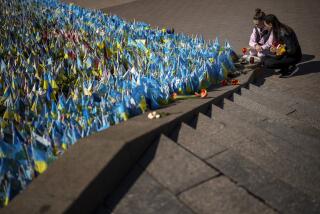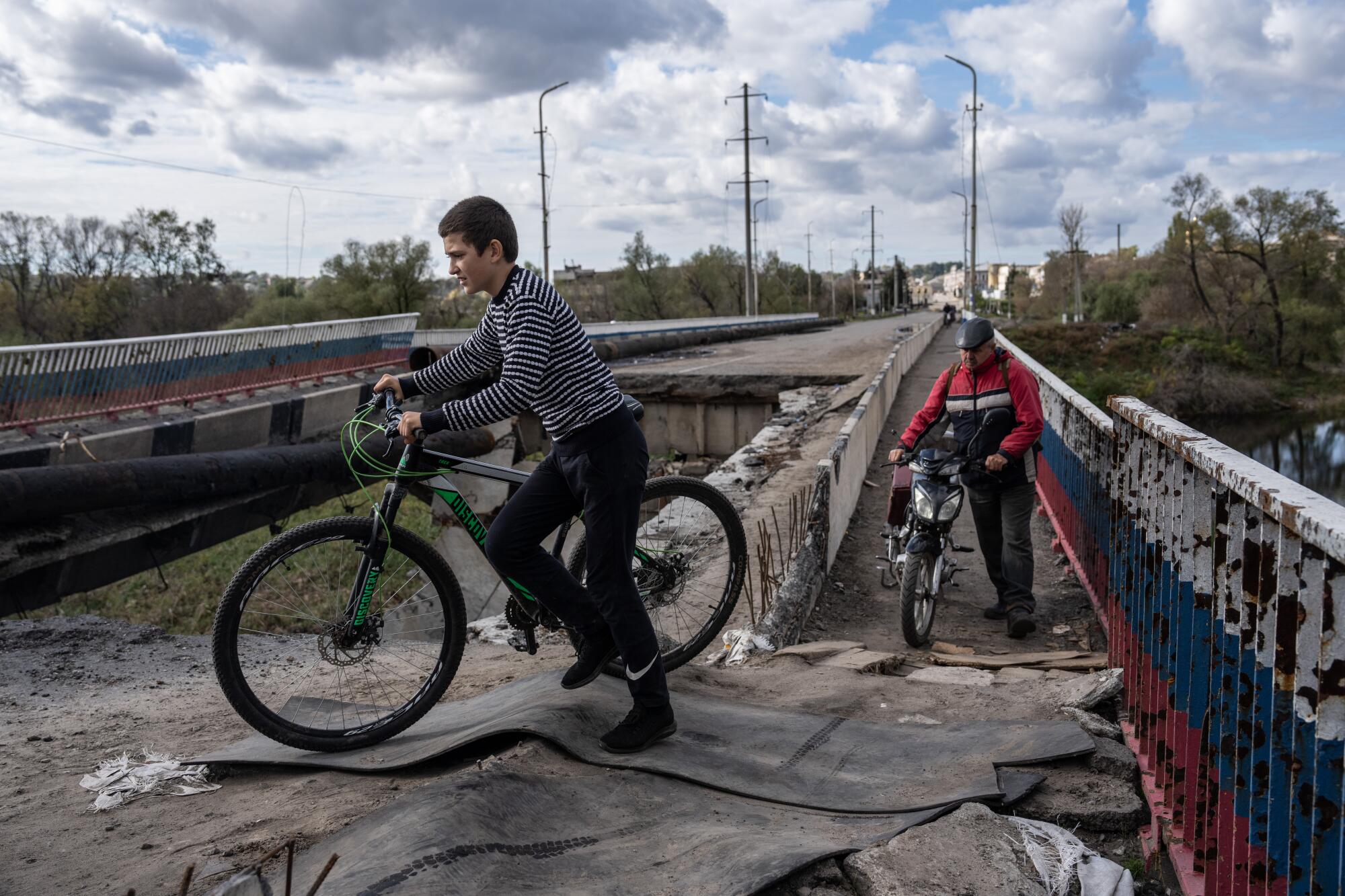
KUPIANSK, Ukraine — Missiles and artillery began pounding the city of Kharkiv in late February. Air-raid sirens filled the air and ambulances screamed through the streets.
The pummeling left rows of high-rise apartment buildings beyond repair as thousands flooded the streets and plowed through traffic jams to the railroad station to escape Vladimir Putin’s furious blitzkrieg.
But about 70 miles to the southeast, in the much smaller town of Kupiansk, there was no sudden bombardment, no violent mayhem. On Feb. 27, the city’s mayor, politically friendly with Russia, spoke to a Russian commander over the phone. And then simply surrendered.
Many of Kupiansk’s roughly 27,000 residents were evacuating, and Ukrainian troops stretched thin by the Russian invasion had already withdrawn to defend Kharkiv. They destroyed a bridge to slow advancing Russian troops, but the mayor, Gennadiy Matsehora, is said to have shown the invading army an alternate route into town.
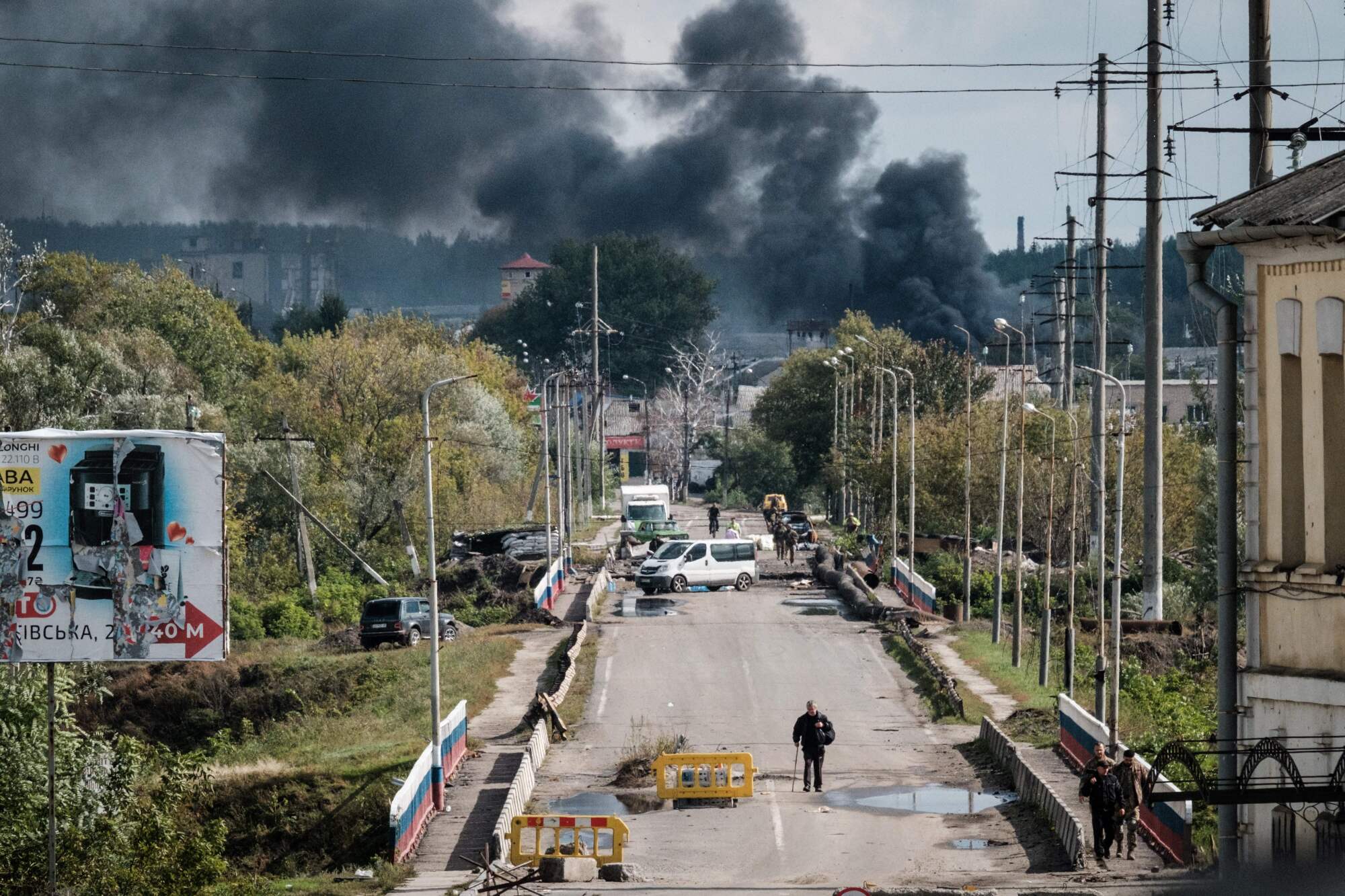
“If refused, the city would be attacked with all the consequences,” the mayor announced in a video address from the city hall. He promised all would return to normal. Schools, hospitals, food stores — all would remain open, he said, but under the Russian flag.
But nothing would be normal. While the deal with the devil may have saved civilian lives, the mayor’s surrender unleashed a new kind of hell for Kupiansk — a sign that even in the rare instances when Ukrainians capitulated quickly, it was not enough for Putin’s invading forces. Putin seems intent on total submission of Ukrainians to the will of Russia.
And just as the mayor became a symbol of treason, across the town other citizens — and one doctor in particular — came to embody what it meant to oppose the occupiers.
Kherson, the provincial capital occupied by Russia, is back in Ukrainian hands. But its people face privation, along with neighbor-against-neighbor suspicions.
Days after the mayor surrendered, a small mob of angry, unarmed protesters attempted to push the Russian troops back. Waving Ukrainian flags and carrying signs, the crowds blocked and chased the invading armored vehicles, but gunfire and tear gas swiftly overwhelmed them.
During the occupation, scores of citizens would be jailed, tortured and interrogated. And when reinvigorated Ukrainian forces returned to Kupiansk in September, the retreating Russian military trained its artillery on the city, leaving thousands homeless, without medical care and many of the basic services that much of the world recognizes as normal.
Russia had envisioned using Kupiansk as a regional headquarters and supply hub because it’s an important nexus of rail lines and roads and the administrative center of a region with more than 120,000 residents.
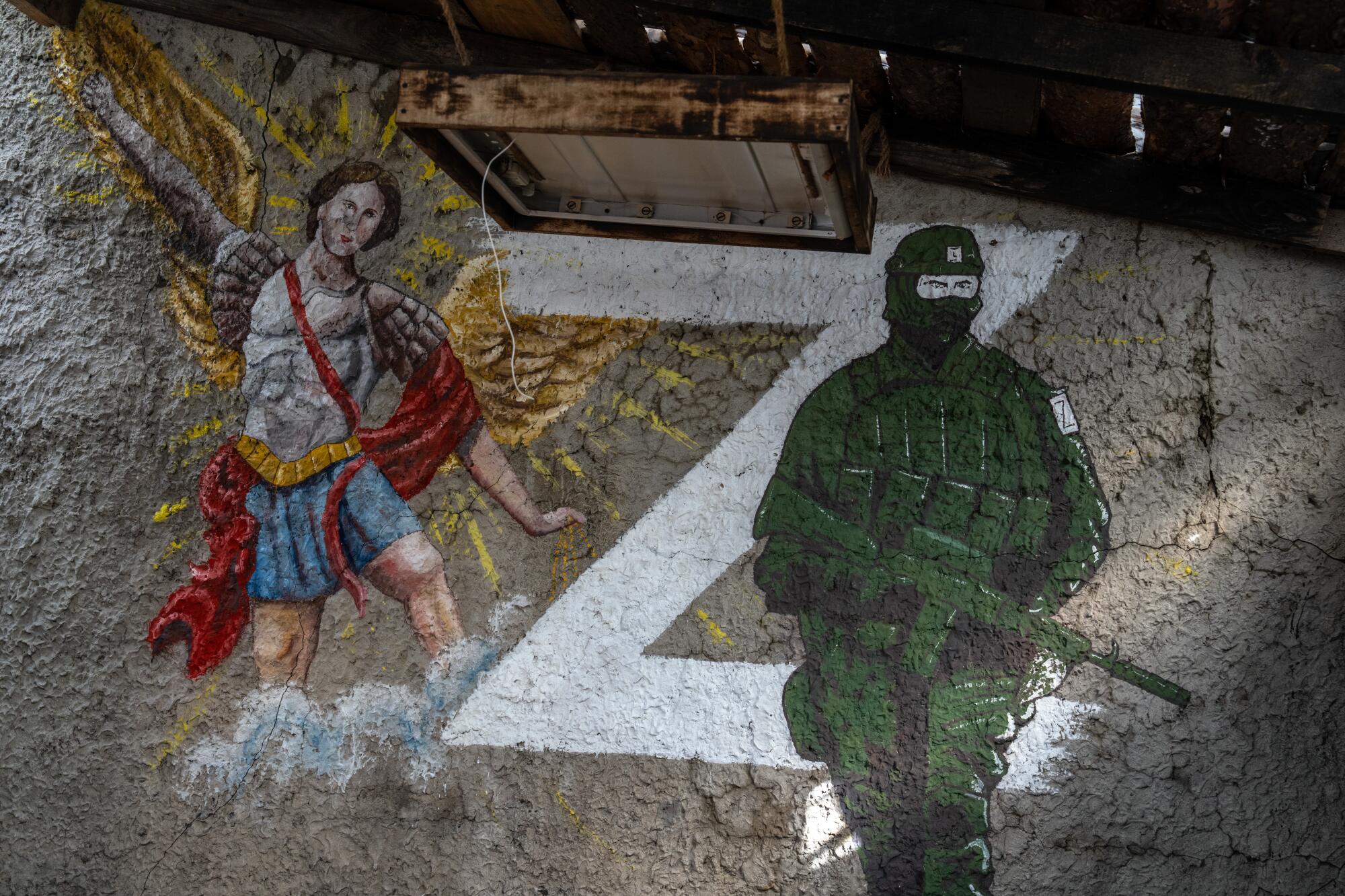
Russian forces plastered billboards on buildings and along major streets with wholesome, happy-looking families and smiling children saying, “We are one people with Russia.” The occupiers patrolled the neighborhoods, retrained teachers, redid school curriculum, took control of communications and put local collaborators on the payroll to run services. Russia planned to stamp out Ukrainian identity.
“It was terrible with the Russian commandant here and soldiers and vehicles everywhere,” recalled Ilana Trach, a local merchant who would lose a store when the open-air markets were bombed and now sells clothing out of her SUV.
“There were worse situations in other villages,” she continued, knowing of the slaughter and destruction of nearby Izyum and other towns. “But it was not so good here. Everyone stayed at home. We didn’t know what would happen.”
The streets emptied most of the day. Residents were uncertain how long the occupation would last and if the Ukrainian defense forces would ever return.
In Ukraine, a bleak winter lies ahead for combatants and civilians alike, as its army strives to maintain battlefield momentum against Russian forces.
Within a week, Russian intelligence officers began turning neighbor against neighbor as names were collected of those supporting Ukraine and who might be a Ukrainian military veteran. A dragnet filled the city police department with as many as 170 prisoners in its dozen jail cells built for 36.
Former prisoners recall screams of torture echoing in the halls throughout the night as prisoners were asked to sign documents pledging loyalty to Russia and to inform on others opposed to the occupation.
“They would make people sing Ukrainian songs and then beat them,” recalled Dr. Yeugeniy Sinko, who was held prisoner at the jail for more than two months. “Then they would beat them more until they sang Russian songs.”
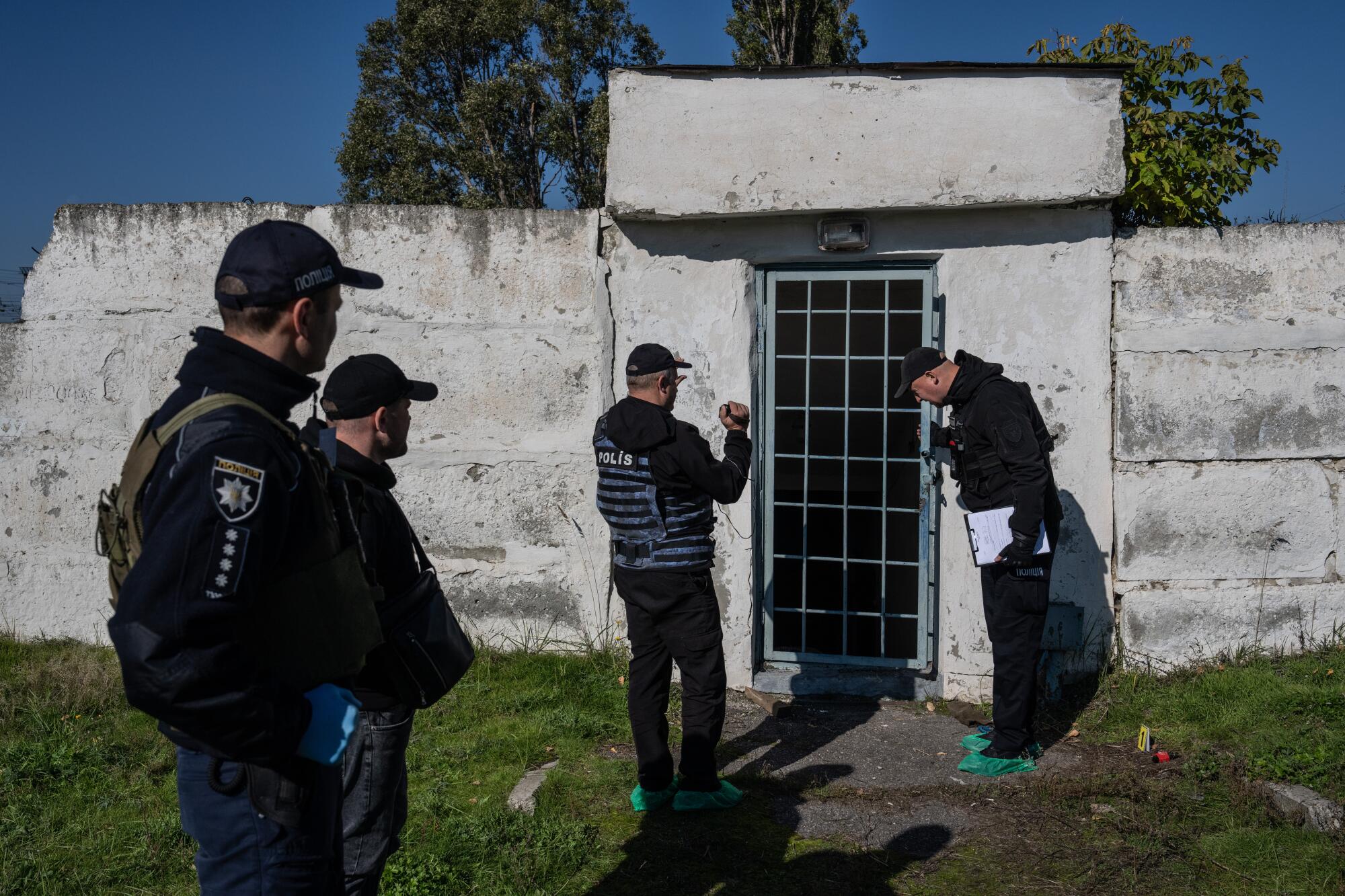
On a recent fall day, a drizzling rain hung over Kupiansk as a local police officer carefully unlocked the door to the former police department and jail. Ukrainian howitzers boomed in the distance at Russian lines.
The offices and jail cells are now a ghostly wreck, first torn up by Russians in their last-minute looting and destruction of evidence, and then by incoming missiles that finished the job. Ripped wiring and lighting hang from the ceiling like bare branches of dead trees. All the windows are shattered, and the furniture is tattered, torn and stabbed. A mountain of burned documents sits in one room, a pile of uniforms in another. The place smells of urine, excrement, smoke and wet, rotting debris.
A gas mask modified for torture lies on a green upholstered chaise in a side office. The filter had been detached and wooden disks with the letter “Z” on them blocked the eye holes on each side. Carefully drawn with a felt-tip pen is an SS symbol for the Schutzstaffel, a Nazi paramilitary organization under Adolf Hitler. There are also odd reflections of dated heavy metal fandom as well: “Metallica,” “Deep Purple” and “Ozzy Osbourne.”
Former prisoners instantly recognized the mask after seeing photos. The mouthpiece would be attached to a hose and held over a smoking fire or a hot hair dryer, they said. Prisoners, almost entirely soldiers or veterans of the Ukrainian defense forces, would be forced to denounce Ukraine and provide information on neighbors.
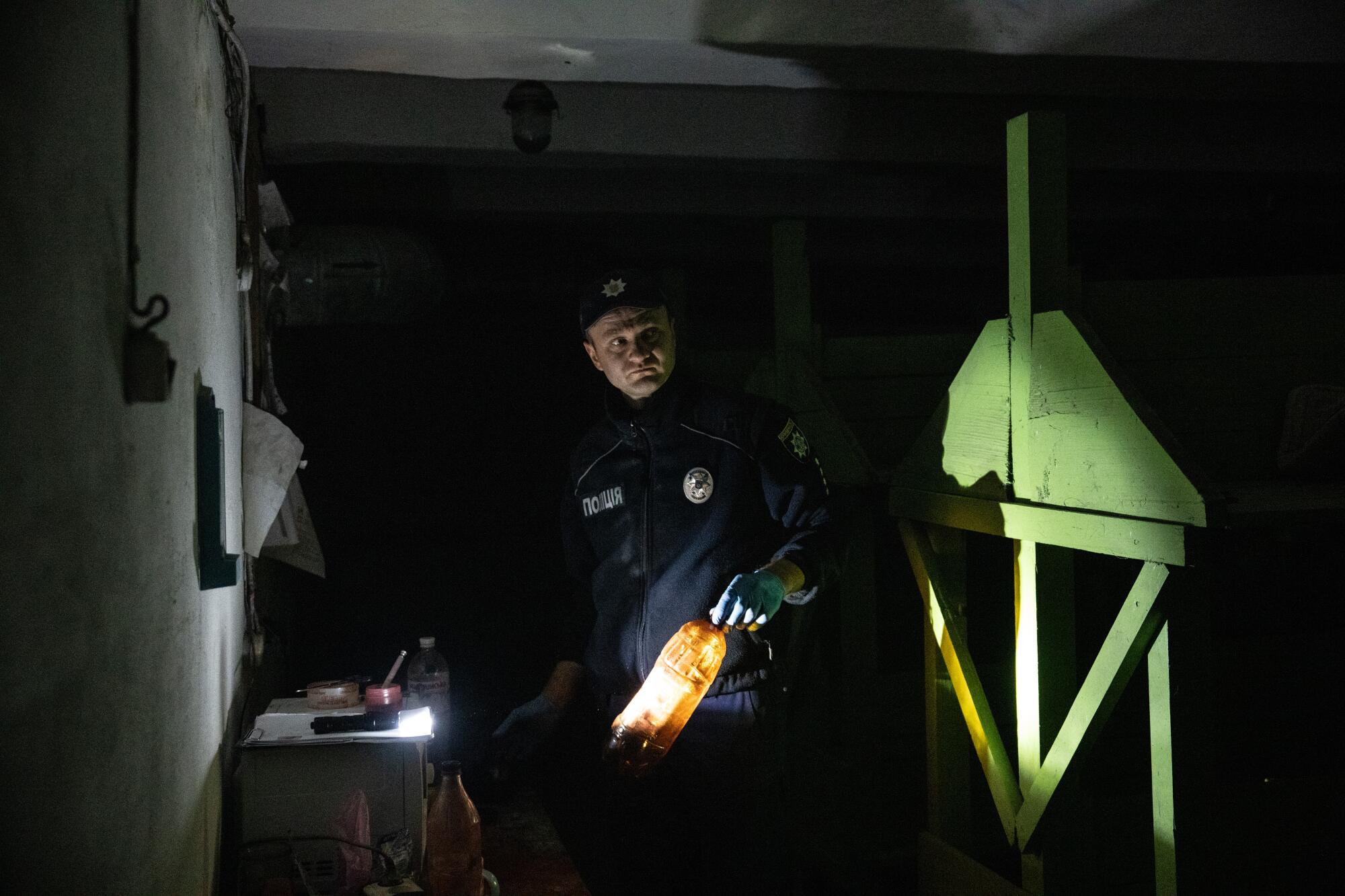
Sinko, the doctor held in jail, showed no surprise seeing the photos during an interview in his office. He nodded in recognition and then pulled up a photo on his phone of an 8-inch-long carpenter’s wood file. “They would drag this over the teeth of prisoners,” he said in a soft, measured voice.
Sinko grew up in Kupiansk. Married with a daughter and in his mid-30s, he headed the local hospital of 800 employees serving the region. After the invasion, men in military green with no insignia arrested him at his home, put a hood over his head and handcuffed him. He said they searched his house for data sticks and stole his laptop, cellphones and $7,000 in cash before taking him to the jail.
A Times reporter reflects on and talks to others about the haunting job of covering mass shootings in America.
Sinko said he was willing to work under a truce as a Ukrainian, but not under the Russian flag. That was the problem. Sixty percent of the hospital employees agreed with him and looked to Sinko for leadership. Demanding that he make a YouTube video for propaganda, which he refused, his Russian jailers regularly beat him with clubs and pipes, Sinko said.
Then, as suddenly as he was taken prisoner, he was set free after two months. The Russians led him to a bridge leading out of town and Sinko made his way to Kharkiv. His family remained detained in Kupiansk.
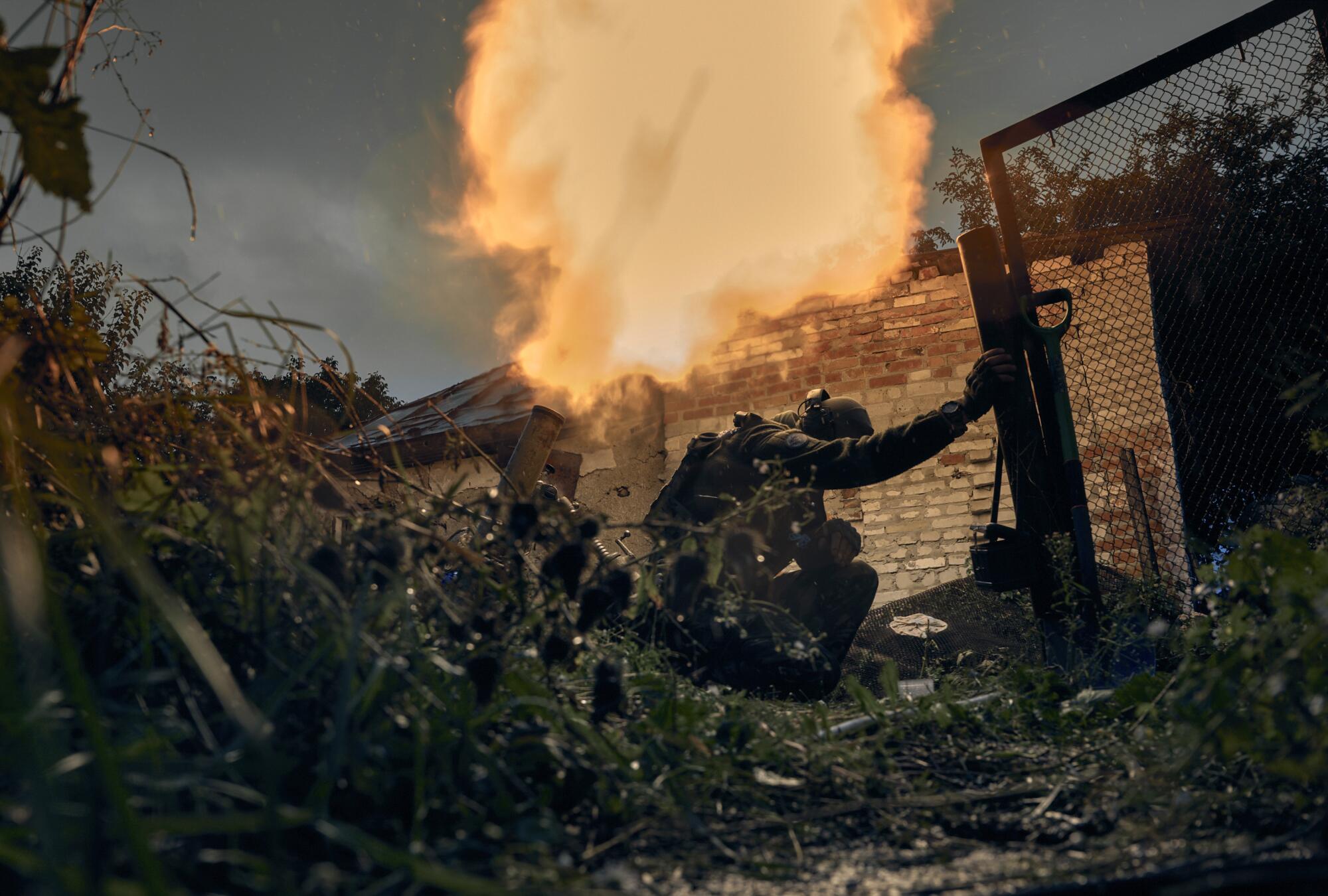
And so it would go for several months, until reorganized Ukrainian defense forces returned bolstered with new equipment from Western allies. Russia’s withdrawal from Kharkiv and the surrounding region became a chaotic rout as its military abandoned its equipment in favor of vandalizing and looting what could be carried away.
The Ukrainians liberated Kupiansk on Sept. 9. But once the Russians crossed the Oskil River on their retreat, they turned their artillery and began pounding Kupiansk, destroying the regional hospital, bridges, apartment buildings, factories, administrative centers and public markets. Dozens of buildings remain damaged and windowless. The streets are pitted with debris. Electricity and heating are sporadic if running at all. Many rely on temporary food kitchens.
The destruction of what Russia claimed to be its own instantly resembled the desolation of what its military had been doing across Ukraine.
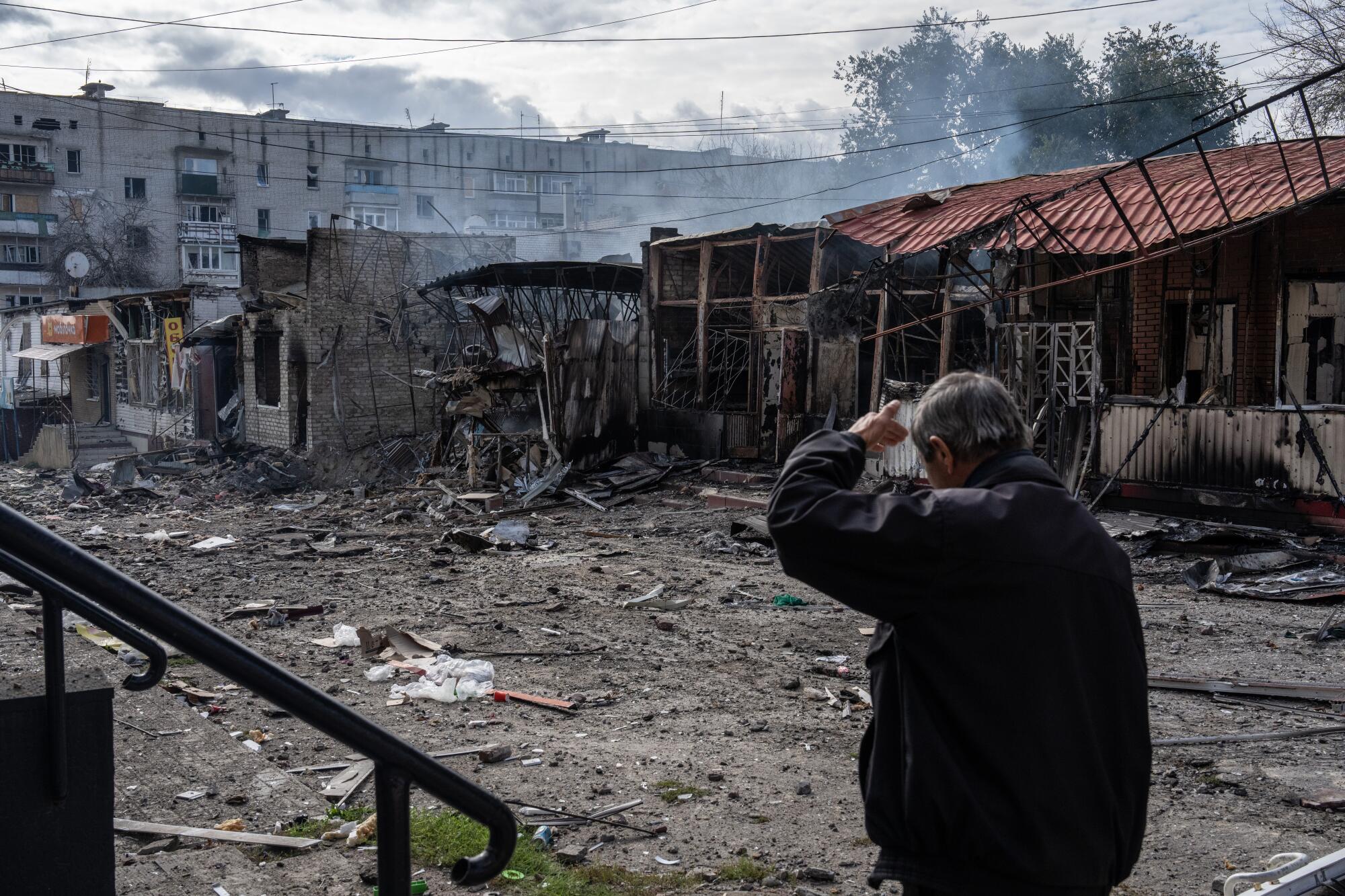
“I never want to see those Russians again,” said one merchant who now sells farm products from her car. “Look what they did. They are butchers. I am Ukrainian. That will never change.”
Apparently, it did for the former mayor who surrendered his city to the Russians. He is long gone.
Kupiansk residents laugh when he is mentioned. “I have no words for him without swearing,” said one.
The normal he promised has yet to return. Even now, Russia regularly shells the city and has destroyed a temporary hospital.
Throughout the war, Moscow has been accused of seizing and deporting Ukrainian children to Russia or Russian-held territories to be raised there.
Soon after the Russian occupation, word on the street was that the mayor began stealing humanitarian aid and selling it on the black market. The Ukrainian government had already charged him with treason the day after he surrendered the town; then the Russians arrested him and put him in jail for his profiteering.
When Russian missiles destroyed the Kupiansk police station and jail, he escaped. No one knows where the mayor fled.
Some say he bought himself passage into Russia. Some say he is dead in Ukraine.
Phinney is a special correspondent.
More to Read
Sign up for Essential California
The most important California stories and recommendations in your inbox every morning.
You may occasionally receive promotional content from the Los Angeles Times.
